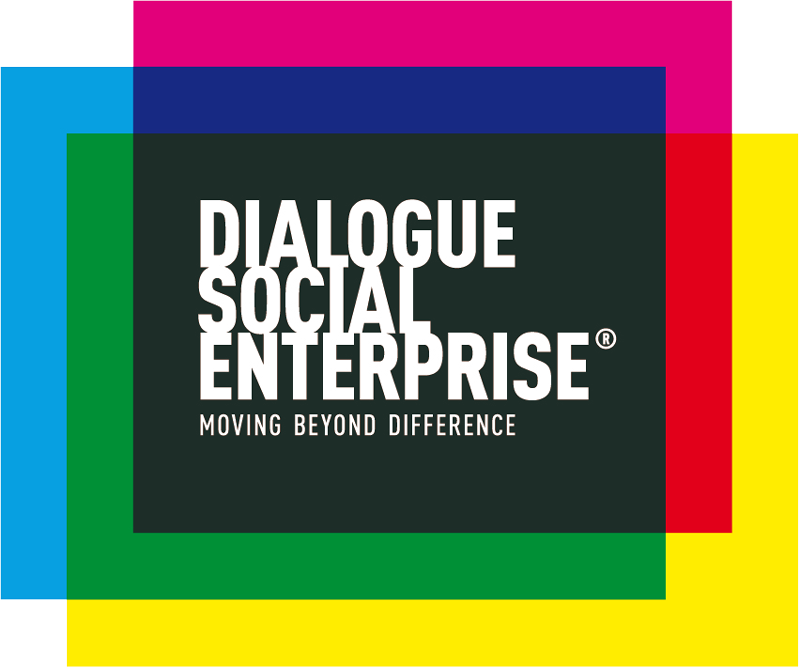We met Nilay when she approached DSE requesting Dialogue Online for architecture students. It was when we discovered how she employs the Istanbul Dialogue Museum as a teaching method.
First of all, thanks so much for engaging your architecture students to attend the Dialogue exhibitions. But before we explore so, tell us a bit about yourself.
My name is Nilay Evcil. I am an architecture professor since 27 years at the Beykent University. And since 2000 I teach universal design
How did you get interested about universal design?
I had to get specialized on an architecture area. And it was my choice to learn and teach about universal design. 18 years ago we did not have particular laws for persons with disability in Turkey. I myself experienced the lack of universal design when I raised my daughter as a single mother, and when you don't have a partner to support you when you are on the street with your baby, and you have to move around, it becomes very difficult. And I thought: if this is complex for me, what will it be like for a person with a disability?
When I started teaching universal design it was not easy. NO one knew about its importance. Architecture professors said that disabled people were not a significant target for architects. Their opinion is that architecture design is for the so called “standard persons.” But there are no standard persons.
At that moment I argued with my colleagues that according with statistics around 12.29 % of the Turkish population were living with a disability. Not because you do not see these persons means they do not exist. They were not existing for us because we were not designing environments for them.
What do you teach your students?
I teach students the idea of design for all. I mean, How to design the environment to consider everybody. And I teach this not only to architecture students but also to interior design and industrial design students since they design our homes, computer, carts, etc.
I don’t like teaching from theory. I prefer teaching from genuine experience. Even if I make my best effort to explain the mobility problems of someone with disability my students will not get it. Even if a person with disabilities delivers a speech to them... is not easy.
I used to ask my student to seat on a wheelchair or walk blindfolded. There is nothing like first-person experience.
And you now employ the Dialogue exhibitions for this, right?
Yes. I had seen the Dialogue museum in a metro station on my way to university. I kept seeing the museums for several months. But you know, always on a rush. I had no time to stop there.
But around 10 years ago I stopped there. Did both experiences, Dialogue in the Dark and Dialogue in Silence. It was incredible! For the first time I found a way to transmit what I had been trying to teach my students. In this exhibitions you can really have the feeling these persons with disability experience. ON top of that, you have a direct encounter with them and can speak and ask as many questions as you need.
From that moment on, I ask my students to visit the Dialog Museum. They come back and report to me. Most of the students remember the guides’ names. I explore emotions and feelings with them. After that we move to architecture language once they have experienced exclusion on first-person.
In 2014 I authored a big report on the students’ experiences at the Istanbul Dialogue Museum.
And what do you think is the outcome of these students visiting the Dialog Museum?
I can say that universal design is a well-known topic now in Turkey.
Students learned to design with all senses. Before they were designing with eyesight only. Students even set an exhibitions about their final projects designing with other senses. We invited some persons with visual disability to be our visitors.
Currently with the support of Harun Sarıkaya, one of the guides of the museum, and with his participation in my lessons, my students continue to explore this unique dialogue and have an experience they will never forget.
I also notice a substantial change on professors’ mindsets. The discovery is that users are not “standard.” they all have unique needs. There are many persons who need more accessible places such as children, elderly or single parents.
What is your final takeaway of partnering your architecture teaching with an experience like the Dialogue Museum?
If designers think about all users, our environments feel better and quality of life is improved.
A fast-paced lifestyle is enough of a barrier for many people today, as it is for my parents, for example. They are slow. Life is not very safe for them and for many others, but designers can make it safer and beautiful for many persons.
And a final request for the Dialogue partners, guides and visitors. I want to learn from similar experiences in other countries. I want to make this impact grow. I also want to experience the Dialogue with Time experience that I was curious about but did not experience. I want this Dialogue, which is also missing in Istanbul, to be opened as soon as possible. I believe that architecture and design are the most powerful ways for social inclusion.

